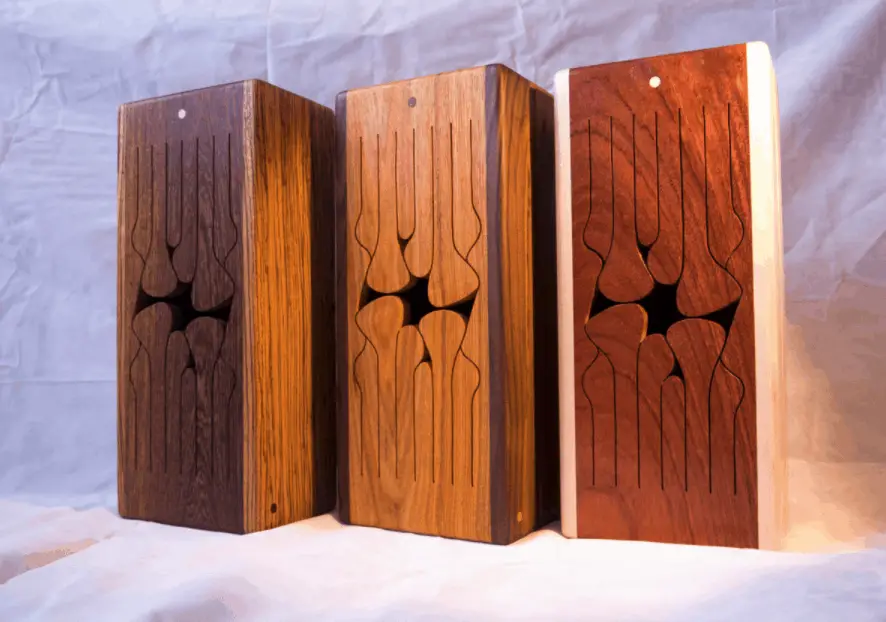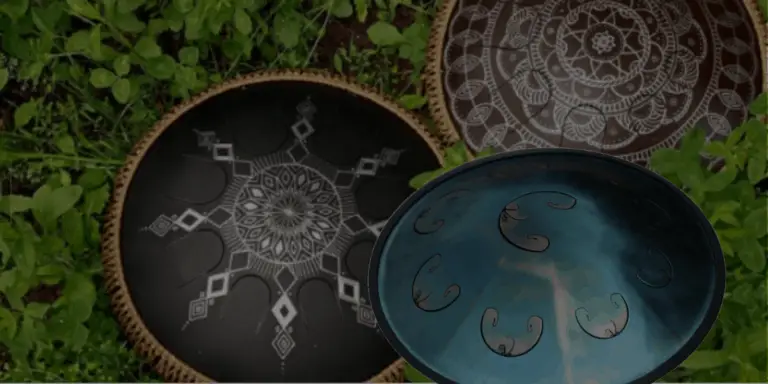Wooden Tongue Drum Introduction
The world of instruments is always changing and has been adapting to what people like to listen to for thousands of years. Which means that it is all the more exciting when a new instrument enters the world of sound, the tongue drum is a combination of old ideas, combined into something new.
Wooden tongue drums are part of the idiophone class of instruments and produce sound with the entire body of the instrument producing sound. An easy-to-learn instrument that makes soothing sounds that can either excite or relax, playable with either your hands or wooden hammers.
The shape of wooden tongue drums are unique, with each tongue requiring fine-tuning, knowing exactly what sounds will be produced and how to measure them. Having a wooden tongue drum is useful, with several musicians preferring to use make their own instrument as they are relatively easy to make.
Here’s everything that you need to know about the wooden tongue drum!
All images in this article are with permission of Jake McCarthy from the TUNG Drum Company
What is a wooden tongue drum?
The first wooden tongue drums were modified slit drums, which is a piece of hollowed-out wood with two slits cut in them. Slamming on this would produce a loud and clear sound that could be heard from far away. Slit drums are just slightly more complicated and a lot more ornate.
Tongue drums are hollow chambers with a solid piece of wood that has been carved into several long shapes that can produce sounds. This is the basics of a wooden tongue drum, however, properly made drums will be able to produce both deep and high notes.

The notes generally made by wooden tongue drums range from A to G notes, each one being tuned by making the tongues thinner by drilling in them.
What is the best material for a tongue drum?
The most obvious part about a wooden tong drum is that it should be made from wood, however, there are several types of wood that have become preferred. While the box itself can be made from almost any type of wood there are two types of wood that have become the much-preferred ones for the physical tongues.
Wenge wood is much loved for its darker colors and harder materials, which is why it is part of the two types of wood preferred for wooden tongue drums. The wood is hard to work with but once it has been shaped into the tongues and placed on top of the box the sounds produced are uniquely relaxing.
A much easier to find wood than Wenge, Padauk wood is much lighter and almost red in color, used as decoration in most wood projects. Because it is also quite hard but easier to come by many wooden tongue drums will have the tongues be made from this simple material. Giving them a much clearer sound and creating a piece of art in the process.
While these are the more preferred woods when creating wooden tongue drums, there are many other woods that can be used. However, because the instrument is hit repeatedly with either hands or wooden mallets the wood needs to be quite hard but not so brittle that it will break once in use.
What are tongue drums used for?
Wooden tongue drums are still relatively new to the scene of musical instruments and their sounds are naturally unique enough that many people are still experimenting with them. However, there are many people that have already started using them in popular culture and these are the people that have found a true love for the sound made by them.
- Yoga: Because wooden tongue drums make such relaxing sounds they have been used quite quickly as the background noise for yoga sessions around the world. Many of those that practice yoga requires that the outside world of cities and cars be drowned out and wooden tongue drums are perfect for that.
- Games: An unexpected place for wooden tongue drums has been their place within the world of gaming. Many games require easy to play and easy to record sounds, with games such as Crash Bandicoot using the wooden tongue drum as an integral part of its soundtrack from the first installment.
- Movies: If you first hear the wooden tongue drum you will be taken back to almost every movie or series that has something to do with Africa. Because it is able to produce such a distinct sound that has been linked to Africa the wooden tongue drum is always used in transition scenes for Africa.
- Art Piece: Even if you cannot play the wooden tongue drum there is one thing that is always undeniable, the intrinsic beauty of the instrument. Many people have taken up to collecting instruments and among those that they collect are the Wooden tongue drums made by artisans from around the world.
- Orchestras: One of the most unexpected locations for the wooden tongue drum in recent years has been in orchestras. Usually, not included owing to its relative newness to the scene tongue drums have become quite popular to add into newer musical pieces. With several types and tunes being used to accompany traditional drums.
While these are in fact some of the most obvious and famous locations where wooden tongue drums can be found the full potential of where they are used is yet to be documented. As love for the unique sounds of the drum are refined and grown the locations where it is kept will continue to grow.
Where did tongue drums originate from?
Originally from Africa slit drums were used as communication tools between towns separated by miles of undergrowth. However, as the instruments were introduced to the Western world the simple slit drum got modified with several tongues added and tuned to produce much clearer sounds.
The first wooden tongue drums are hard to trace with many different locations claiming to be the first real ones. Some even saying the steel tongue drums cam first, however, we do know that all wooden tongue drums are usually shaped in unique ways with great pieces of art connected to them.
Why is it called a Wooden tongue drum?
The most simple part of understanding a wooden tongue drum is where it received its name. Owing to the unique shape that the drum has, the top layer that produces the sounds is cut into several slits. These slits are usually round and next to each other, this has created the look of tongues sticking out at the top of the box.
A wooden tongue box has no metal parts in it either, with each tongue playing a different sound the music produced by the wooden tongue box has become quite unique. One of the most confusing aspects of the wooden tongue box is just how each tongue is tuned, with many artisans getting to different answers.
Usually it involved removing some of the material as the box is being made, shaving off a little bits of each tongue until the right sound is finally produced.
The Evolution of Wooden Tongue Drums
Below you can see a video of a wooden tongue drum sat on a steel base. This is a unique concept fusing the two materials to create a new an unique tongue drum experience.
Built in Ireland by Jake McCarthy and his team we have a beautiful instrument available in custom designs made to order with a 6-8 week lead time.
I highly recommend taking a closer look at the Tunga Hardwood handpan as an alternative to a steel handpan, if budget is your biggest concern.
You will get a high quality, unique wooden tongue drum instrument on a steel base that will not only sound incredible, but you’ll also have a visual and audible art piece too
Conclusion
Wooden tongue boxes are both unique and capable instruments that have brought joy to many people around the world. Getting to know your instrument will let you create soothing sounds that can make anyone relaxed, or you could move a bit faster to create music that would get the blood of anyone pumping and racing.
Just be sure that you don’t smack your tongue box so hard that it breaks or detunes the tongues!


![Best Percussion Instruments For Kids [That you can play too]](https://cdn-0.coolpercussion.com/wp-content/uploads/2020/09/woman-4010110_1920-768x512.jpg)


